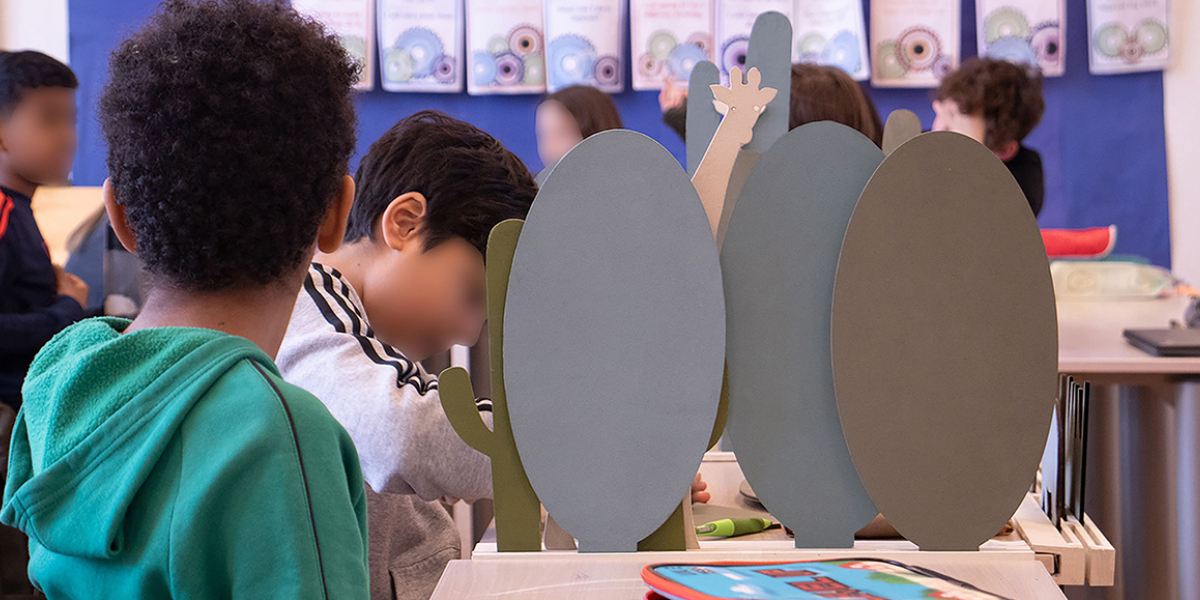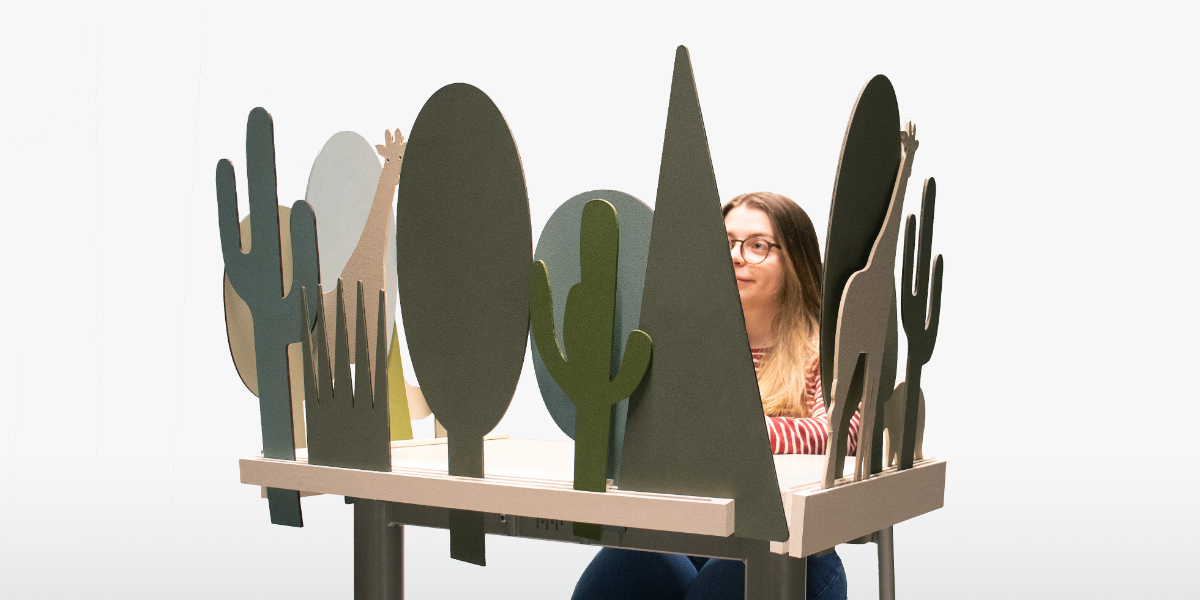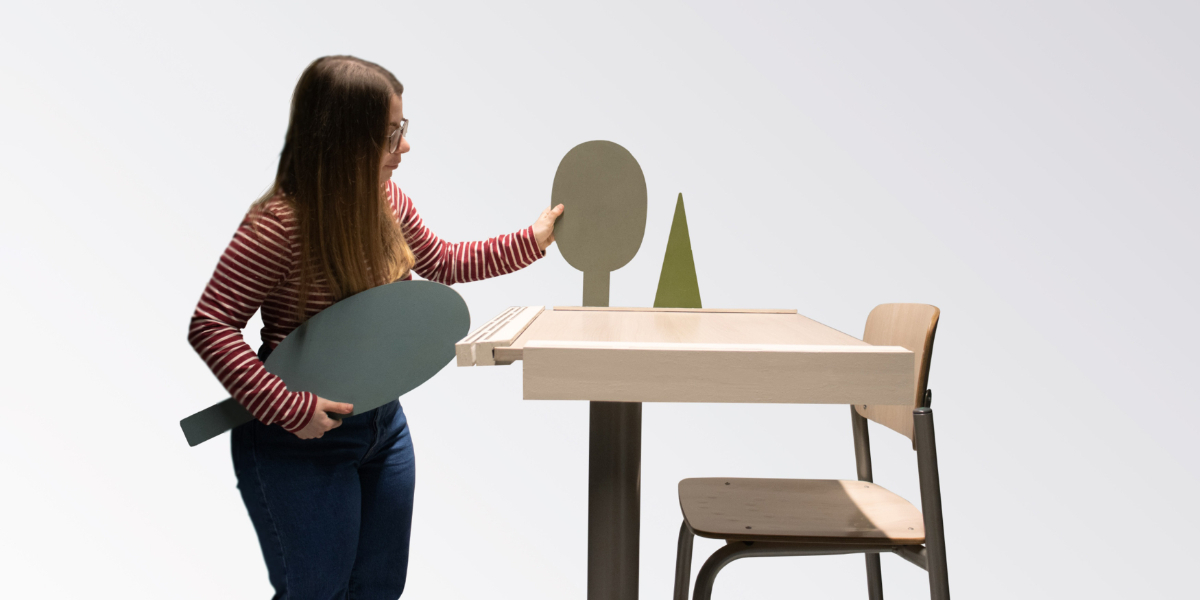AWARD YEAR
2023
CATEGORY
Play & Learning
GOALS
Good Health & Well-being, Quality Education, Trust, Tolerance & Empathy
KEYWORDS
Neuro-divergence, ADHD, Desk Partition, Inclusion, Classrooms in Elementary Schools
COUNTRY
Netherlands
DESIGNED BY
Shion Ito
WEBSITE
https://shionito.com/forest
Forest
Forest is a desk partition that lets students create a semi-closed space with positive emotion.
How does it work?
Forest is a new form of partition which creates a physical bubble where students can focus on their studies while feeling connected with other students. It consists of a set of desk partitions and slot profiles that attaches to the desks. With cut-out shapes of animals, trees and plants, the partition can be arranged by students creating their original scenery. And this playfulness encourages other students to join in the building of the bubble. This way, Forest gives students autonomy to choose how high and how dense their partition is going to be.
In addition, students can slide these partitions down when they don’t need so that they can actively engage with others. Through the evaluation test that involved six neuro-typical students and three students with ADHD, all students found the final design to be useful for focusing on their assignments. It was also seen that they constructed the partitions with other classmates. This collaboration made them feel connected with one another.
Why is it needed?
Through observation research in a classroom of an elementary school in the Netherlands, where two students with ADHD were included, it was noticed that there were some students who had difficulty concentrating on their studies. The current solution to this is a table with a closed screen around it so that the child can isolate themselves from the group for a while to focus on their assignments. While this is an effective method, children often view it as a negative experience. The reason for this is that it makes them turn their backs on the other children. In other words, they feel as if they are rejecting communication with others. There is a hard division between either being part of the group (with the risk of being overstimulated) or having a place to concentrate (but being isolated from the others). My design goal was to break through this complete separation with a more friendly and flexible form of separation.
How does it improve life?
The partitions in Forest consist of different shapes of animals, trees and plants which allows students to build up their physical bubbles in a playful manner reducing their negative feeling towards using partitions. And this playfulness encourages other students to join in the building of the physical bubble. This collaboration makes them feel connected with other students.
Also, this partition is designed not only for students with ADHD but anyone who wants to focus through a creative process. It doesn’t label specific students as the ones in need of support and instead, embraces the students’ diversity.
To conclude, Forest helps students find their focus through their connectedness, not through isolation or polarization. It improves their learning experience in the context of classrooms.





